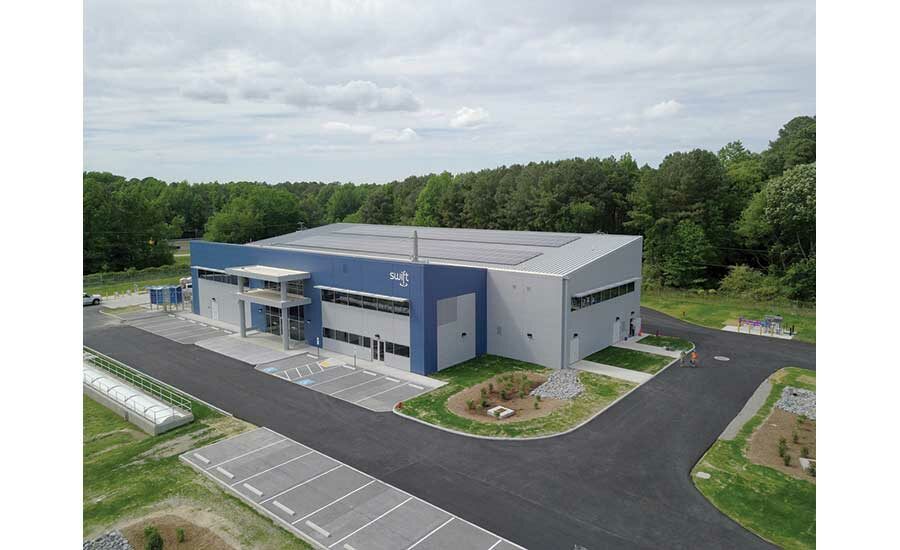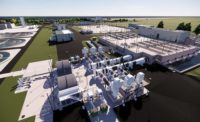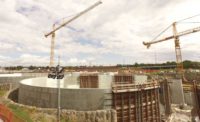Hazen and Sawyer is working with AECOM to provide program management services for the full-scale $1-billion implementation of the Sustainable Water Initiative for Tomorrow (SWIFT) for Hampton Roads Sanitation District (HRSD) in southeastern Virginia. Five SWIFT advanced treatment facilities will be built at existing HRSD water reclamation facilities. The facilities will use an eight-step, carbon-based advanced treatment process to further treat up to 100 million gallons per day of highly treated wastewater to meet drinking water quality standards. That water will be pumped back into the Potomac Aquifer to help replenish shrinking groundwater supplies. Under the new $80-million contract, awarded to AECOM in September, Hazen will provide technical design for bridging documents as part of HRSD’s consideration of delivering the facilities through an alternative delivery procurement process. The first documents—for a SWIFT treatment facility at HRSD’s James River Treatment Plant—are expected to be complete by spring of 2020. Dwayne Amos, an associate vice president at Hazen, says the 1-mgd, Hazen-designed SWIFT Research Center, which went online May 2018, is helping to demonstrate at a meaningful scale that carbon-based advanced treatment can produce water that meets primary drinking-water standards.
|
Related Link |
Rebuilding Oyster Beds
HDR Restores Texas Reefs
HDR assisted the Nature Conservancy, which partnered with the Texas Natural Resource Damage Assessment Trustees, to design, permit, construct and monitor approximately 60 acres of a three-dimensional oyster reef complex adjacent to Lap Reef in Copano Bay. The $4.5-million project will mitigate losses to oyster reef fisheries that have been in steady decline for the past several decades. HDR is placing rock at a higher elevation, which creates more space above the bay floor for the reef structure to remain above siltation.
Battelle
Navy PFAS Cleanup
As part of its continuing environmental remediation work for the U.S. Navy at the former Naval Air Warfare Center in Warminster, Pa., Battelle is now under contract to clean up PFAS found at drinking water systems near the site.
PFAS, the term for per- and polyfluoroalkyl substances, are a group of man-made chemicals often used in firefighting foam at airports. Typically, ion exchange or granulated activated carbon filtration systems are used to reduce PFAS levels to below detectable levels in drinking-water plants. However, Amy Dindal, PFAS program manager at Battelle, says that unless the original sources of contamination are remediated, “It’s like putting a Band-Aid on [the problem] … because [the chemicals] continue to get into the drinking water.” A congressionally requested report released in June found that the Department of Defense has identified more than 400 sites contaminated with PFAS.
Brown and Caldwell
South Platte Water Study
Brown & Caldwell has been selected to lead a South Platte Regional Water Development study to help municipal officials from the South Platte River Basin in Colorado manage the basin more effectively. The South Platte River Basin is facing the largest projected water supply gap of any of Colorado’s river basins. Brown and Caldwell will provide project oversight, coordinate a stakeholder task force, evaluate agricultural requirements and lead modeling. Stantec will integrate the results of the South Platte Storage Study, a 2017 report detailing multipurpose water storage possibilities in the Lower South Platte River basin. Initial concepts being studied include multiple linked storage facilities capable of storing more than 150,000 acre-ft of water, and additional conveyance capacity strategically positioned throughout the basin. The work began in March and the study is expected next year.
Back to "Top 500 Sourcebook: Cruise Line HQ Mimics Ship Design"







Post a comment to this article
Report Abusive Comment